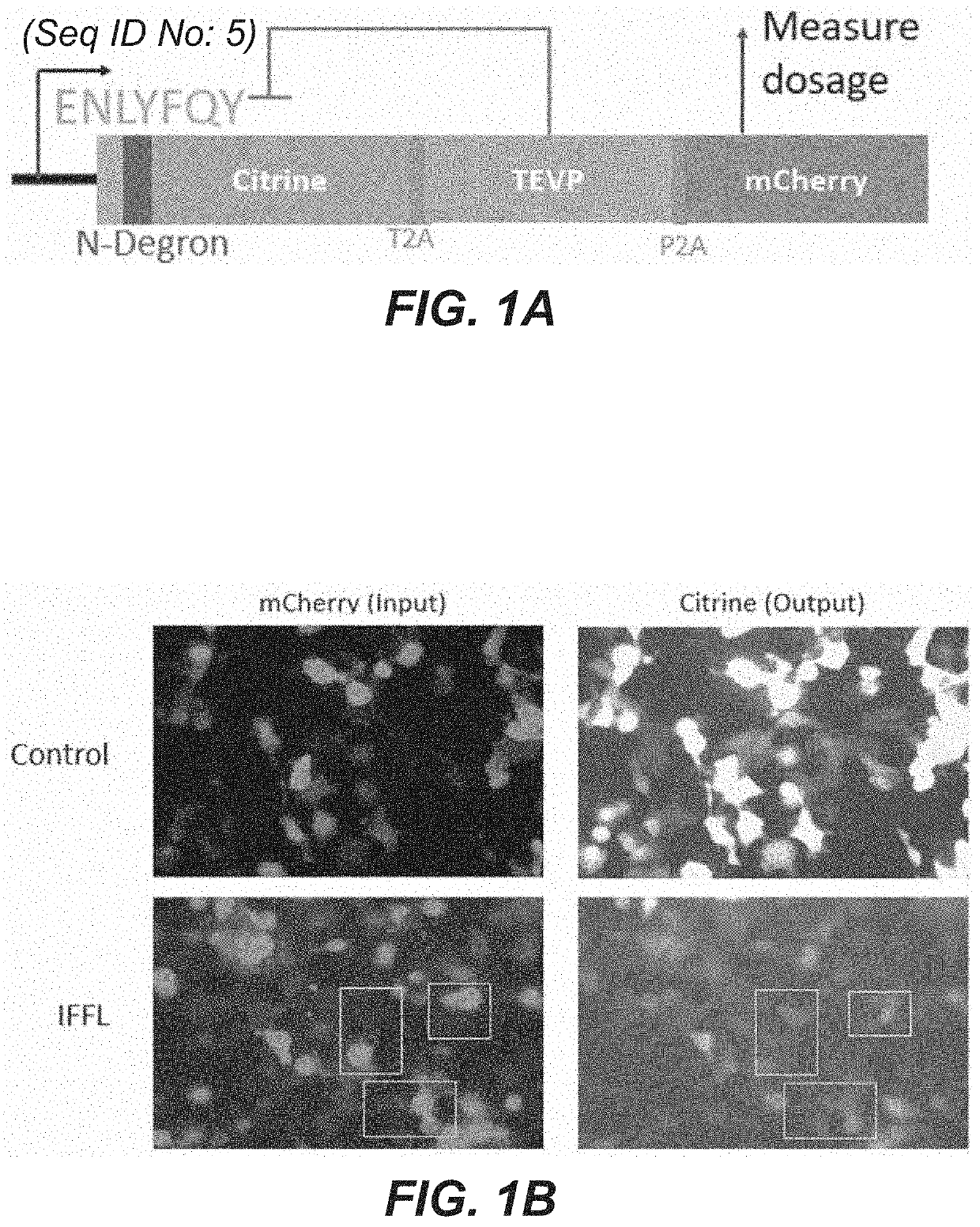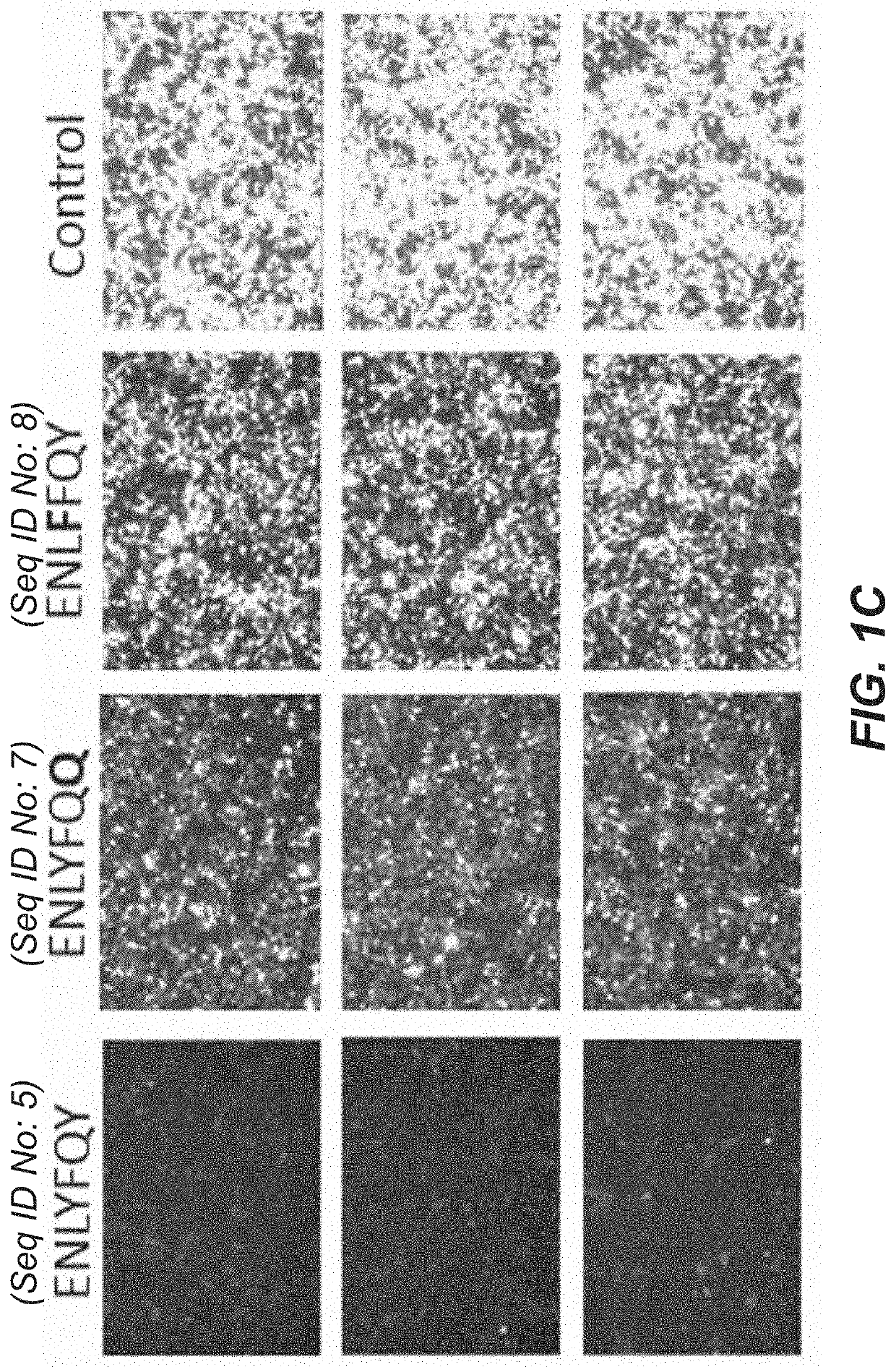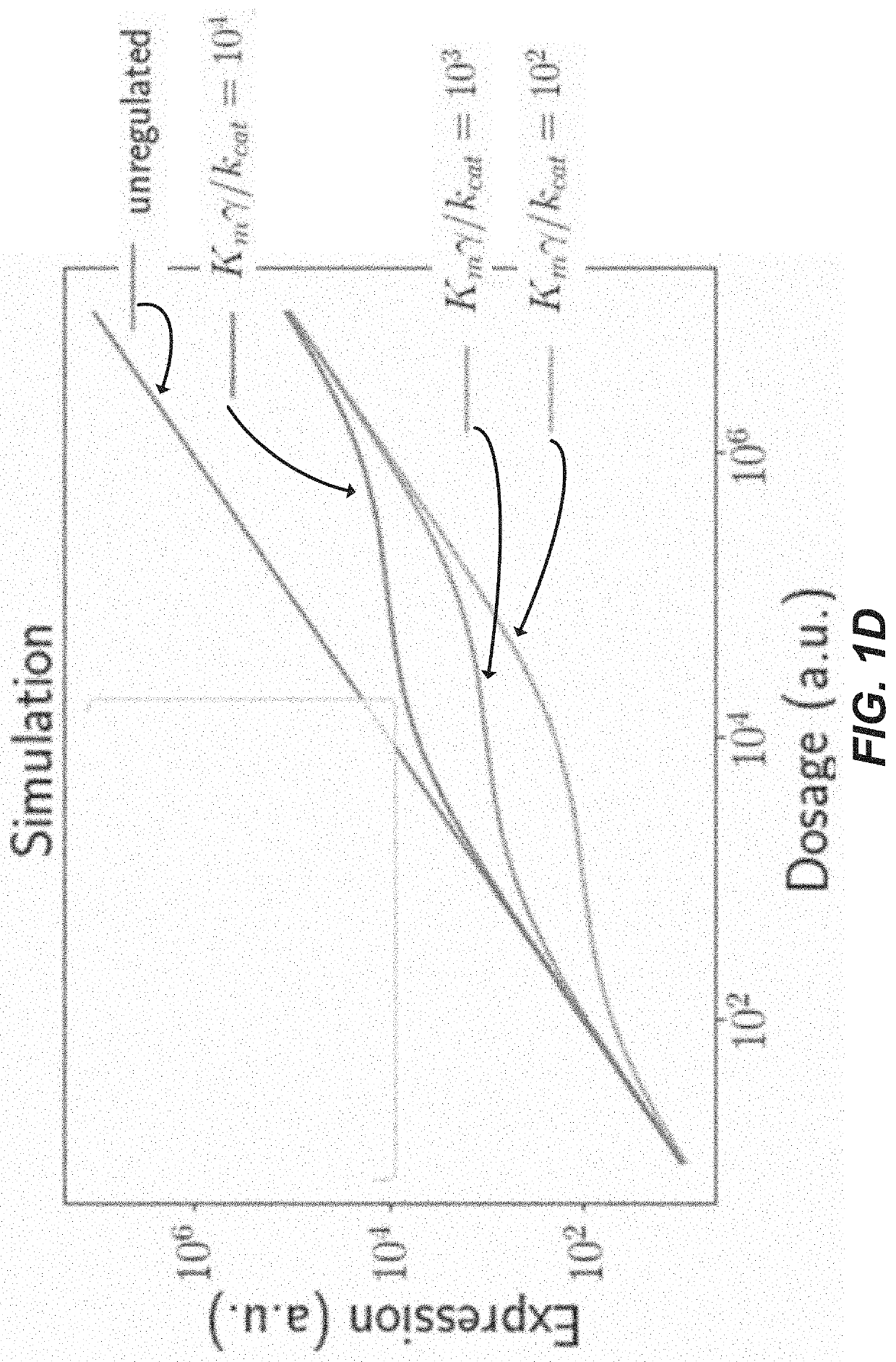Method for robust control of gene expression
a gene expression and robust technology, applied in the field of polynucleotide delivery and expression, can solve the problems of difficult control of the level of payload that gets delivered to any individual cell, deleterious effects associated with over-dosing the delivered gene, and unclear what kind of regulation would be sufficient, so as to achieve robust and tunable control of gene expression
- Summary
- Abstract
- Description
- Claims
- Application Information
AI Technical Summary
Benefits of technology
Problems solved by technology
Method used
Image
Examples
example 1
Proof-of-Principle for Protein-Level Incoherent Feed-Forward Loop Circuits
[0182]This example provides experimental demonstration of protein-level catalytic incoherent feed forward loops which show dosage compensating expression.
[0183]Single transcript protein-level IFFLs consisting of a protein with a fused N-degron tag, a protease which cleaves the N-degron tag, and an unregulated mCherry to read out the total gene dosage, all co-produced via 2A peptide sequences (shown in FIG. 1A) were cloned and tested. An Ef1a promoter drives the expression of (1) the protein of interest (payload protein) (“Citrine”), which is fused to an N-end degron (“N-degron”) concealed by a TEVP cleavage site (“ENLYFQY”; SEQ ID NO: 5), (2) the co-translated protease (“TEVP”) triggers the degradation of the regulated protein (payload protein) (“Citrine”) by cleaving its substrate (“ENLYFQY”; SEQ ID NO: 5), and (3) an unregulated fluorescent protein (‘mCherry”) is included to provide a measurement of the tran...
example 2
Proof-of-Principle for miRNA-Level Incoherent Feed-Forward Loop Circuits
[0186]This example provides experimental demonstration of miRNA-level catalytic incoherent feedforward loops which show dosage compensated expression.
[0187]For gene therapy purposes, it can be advantageous to use regulatory methods that do not involve the production of any foreign proteins, which could be immunogenic. This Example describes the testing miRNA IFFLs that achieve dosage compensation without the production of proteins besides the gene of interest by incorporating miRNA target sites as well as a synthetic intron containing an miRNA hairpin sequence into the 3′ UTR. The steady state expression of these circuits was tuned by varying the complementarity and copy number of miRNA target sites in the 3′ UTR. These miRNA IFFL cassettes were used to create circuits with 3 levels of regulated expression of both GFP (FIG. 4A) and an MeCP2-EGFP fusion (FIGS. 5A-5B). FIG. 4A shows different constructs were desig...
example 3
IFFL Circuit Motif Modulates Expression of Virally Delivered Cargo in Mammals
[0188]This example provides in vivo proof-of-principle experimental demonstration of miRNA-level catalytic incoherent feedforward loops which show dosage compensated expression. FIGS. 6A-6B depict non-limiting exemplary embodiments and data related to an IFFL circuit motif modulating the expression of virally delivered cargo in mammals. AAV genomes containing GFP under IFFL control with either 0 or 10 miRNA target sites were packaged into AAV-CAP.B22 (Flytzanis et al 2020). AAV-IFFL was then delivered via direct injection (1 uL of 5e12 vg / mL) into the cortices of 8 week old male C57B16J mice (FIG. 6A). After 14 days of expression, animals were perfused with 4% PFA and brain tissue was collected in 50 uM slices for imaging. Virally transduced cells are indicated by mRuby expression (FIG. 6B; column 1). At similar levels of RFP, the genomes containing 10 miRNA target sites (FIG. 6B; row 2) exhibit marked repr...
PUM
| Property | Measurement | Unit |
|---|---|---|
| Current | aaaaa | aaaaa |
| Current | aaaaa | aaaaa |
| Fraction | aaaaa | aaaaa |
Abstract
Description
Claims
Application Information
 Login to View More
Login to View More - R&D
- Intellectual Property
- Life Sciences
- Materials
- Tech Scout
- Unparalleled Data Quality
- Higher Quality Content
- 60% Fewer Hallucinations
Browse by: Latest US Patents, China's latest patents, Technical Efficacy Thesaurus, Application Domain, Technology Topic, Popular Technical Reports.
© 2025 PatSnap. All rights reserved.Legal|Privacy policy|Modern Slavery Act Transparency Statement|Sitemap|About US| Contact US: help@patsnap.com



